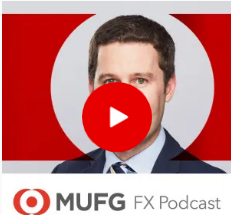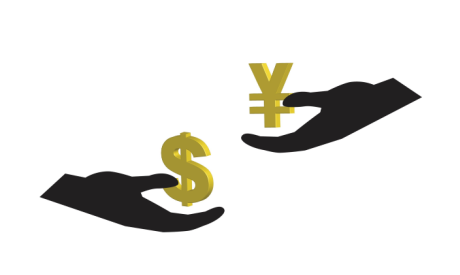To read the full report, please download PDF from the link above.
European Macro
Our view on the European economy remains constructive this year. We look for a degree of cyclical improvement over coming quarters as households’ real purchasing power recovers and central banks start to ease policy. Growth is set to pick up towards potential rates by year-end.
Improving global conditions mean that the conditions are also now there for a cyclical recovery in German industry. Structural headwinds remain, but survey evidence now points to better output over coming months.
We remain confident that the European disinflation process remains on track. In isolation, both the ECB and BoE are approaching the point where a degree of easing would be appropriate – but the topic of divergence with the Fed will remain in focus if US data continues to come in hot.
US Fixed Income: Pick your favourite Fed scenario
Macro View: Some of the key data sets have been more surprising to the upside, where the top line of each of these data updates continue to suggest the workings of a solid economy. However, under the surface we believe there are some underlying concerns.
On the employment side, while nonfarm payrolls have been beating consensus estimates and posting sturdy job gains, we view the wedge between the establishment (NFP) and household report as providing mixed signals regarding the actual strength of the labor market. In addition, the one major negative to an otherwise generally good March jobs report was that the gain in employment was driven by part-time work, as full-time jobs actually decreased in the month. In fact, full-time job growth has been negative for the past number of months, leading to the annual cumulative basis coming in lower than the 2023. This can also be confirmed via lower hours worked in the US. We believe labour dynamics may not be as strong as the headline numbers suggest.
As for inflation, we do not believe that a few months of hotter inflation means that prices have turned and will continue to trend upward sustainably. While March’s headline and core CPI data came in above consensus at 0.4% month-over-month, in our view it is still reasonable to view the path toward lower inflation as a bumpy one. In addition, the spike in supercore (core services ex-housing) inflation was likely driven by one off factors such as a spike in auto repair costs. It’s also important to remember that much of the stickiness of US inflation is coming from the shelter component to CPI. And given other measures of rental inflation, it’s a real risk that the BLS version of the owners’ equivalent rent is being over-estimating. Lastly, even though annualized inflation calculations, which have caught both the Fed and markets’ attention, have swung back up in recent months, history tells us that a few months don’t necessarily make a trend. The move to more subdued inflation dynamics was always going to be uncertain and uneven. In encouraging news, PPI data was more subdued in March, providing some hope that the Fed’s preferred gauge of inflation, PCE, will also reflect softer price gains.
Market view: We are at a potential crossroads for both rates and risk markets alike. The lack of softening in the growth data, coupled with sticky inflation, has seen Fed speakers turn hawkish again and pushing back on cuts. The short-term interest rate futures have now less than 2 cuts for terminal 2024 rate expectations. This along with concerns about UST supply has pushed up US rates to near-term 2024 high levels. Meanwhile other financial markets are starting to display weakness and volatility. If the Fed digs in and aligns their forecasts to the market at the June meeting (when they release new dots estimates for total cuts in 2024) that could trigger a risk off move. Gauging by the recent declines in US stock markets, we might not have to wait for that outcome if equity earnings do not come in as strong as valuations suggest. In a circular reference way, risk-off might be the only thing that stops rates from rising further too.
FX Outlook
The US dollar has strengthened against all G10 currencies since our last release of the Global Markets Monthly (25th March) with the US data continuing to point to resilience and the prospect of the Fed leaving rates unchanged for longer. Our view of no pronounced divergence is certainly more uncertain now and we see a window now open for the US dollar to advance further. The move in short-term rate spreads is certainly consistent with continued US dollar strength although the last time spreads were at these levels, the dollar was stronger in part due to the huge energy price shock. We have pushed back the timing of a Fed rate cut but July is still plausible and just one weak inflation report would likely alter the momentum in the market notably. We expect the ECB to cut in June, which is well priced with the potential for the BoE to surprise in June or certainly cut by August. So while the risks of divergence and a further strengthening of the dollar are higher than in recent months, there are likely still limits to the sustainability of any divergence and hence the strength of the dollar.
USD/JPY - Neutral Bias - 145.00-158.00
EUR/USD - Bearish Bias - 1.0400-1.0900
USD/CNY - Neutral Bias - 7.1600-7.2800
KEY RISK FACTORS IN THE MONTH AHEAD
- The main upside risk for USD/JPY would be that this latest phase of stronger US inflation turns into something a little more persistent and lifts US yields further. The markets take out of market pricing more of the Fed rate cuts currently priced and results in the 2yr UST note yield moving back above the 5.0% level for the first time since November of last year. Added to this risk-scenario, the MoF and BoJ decide not to intervene as expected given the US yield move and this prompts a bigger move to the upside than generally expected with a potential for a test and even breach well beyond 155.00. It’s a key risk although we see the risk as quite small.
- The main upside risks for EUR/USD are: i) if the US economy and/or labour weakens sharply bringing forward Fed rate cut expectations and encouraging a weaker USD, ii) the recent pick-up in US inflation proves to be just a temporary bump in the road and slower inflation resumes in the coming months, and iii) if the euro-zone economy picks up more strongly than expected as the headwinds from higher inflation fades. While higher energy prices resulting from a further escalation of military tensions between Israel and Iran could deter the ECB from easing policy as soon as June, it is unlikely to pose upside risks for the EUR given the negative implications from anther energy price shock for the euro-zone economy.
- For USD/CNY, the recent increase in the 1m CNH HIBOR rate provides some confirmation that China’s government still aims to maintain a stable level for the pair. It will discourage speculative selling of the renminbi in the overseas market. And with more Asian authorities expressing concerns over their weak currencies and intention to intervene in FX markets, the PBOC may receive less push back forces in the market for the renminbi to weaken further. Still, the strength of US dollar is the most important driver for USD/CNY in near term. Strong policy stimulus or faster pace of government bond issuance could bring some upside on CNY against the dollar.



